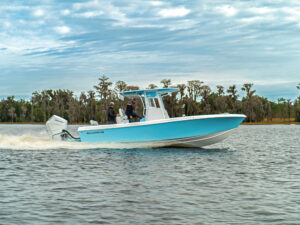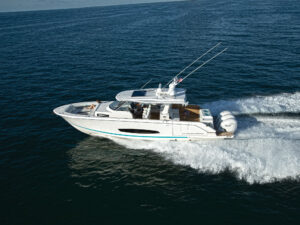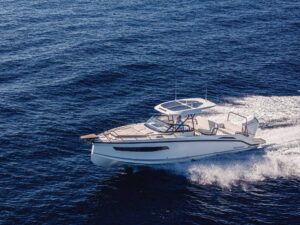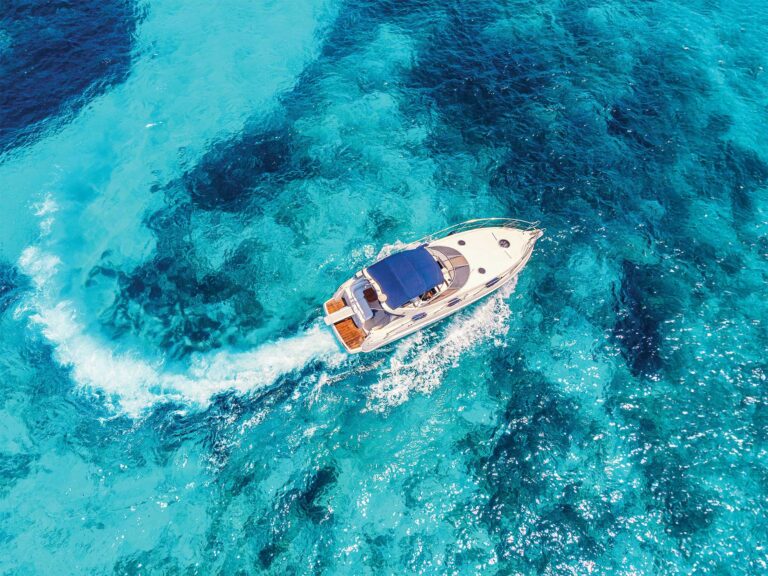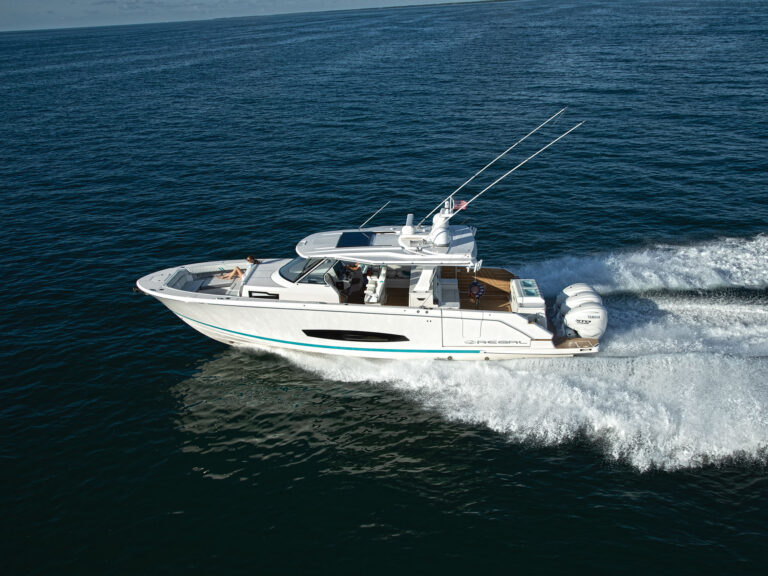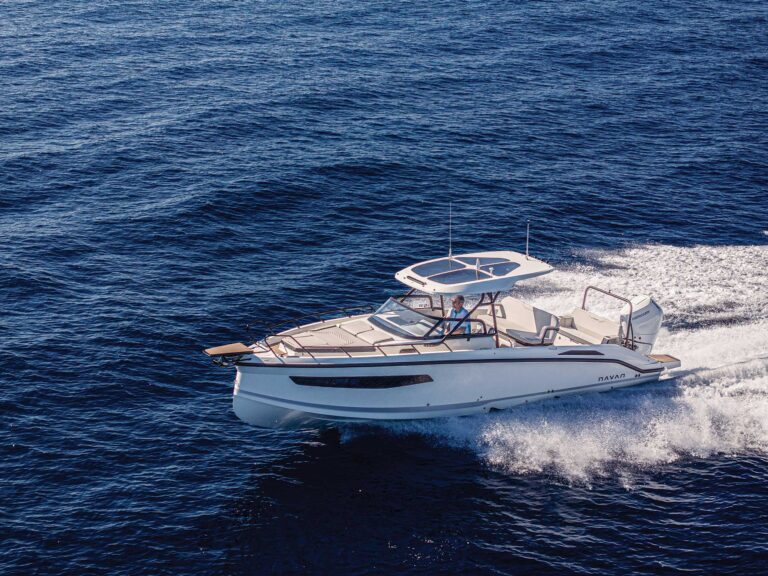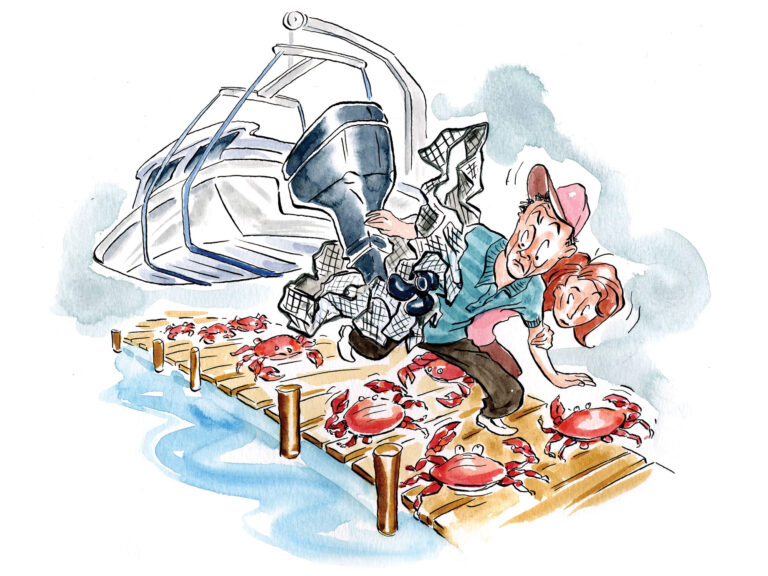I rediscovered romance, and all it took was a trip to France. But not in the way you’re thinking-no moonlit walk along the River Seine, no chance encounter in a Provence bistro, nor at the beach on the Riviera. It came to me in a factory. I learned to appreciate RIBs a few years ago after some extended helm time on a Zodiac Pro Open. It was safe and stable, and it comfortably handled anything I threw at it. It was a good boat. So good that I began taking its unusual qualities for granted, never giving a thought to how these unique craft are put together-or where. That is, until I made the trip to Toulouse, where Zodiac constructs the tubes for its RIBs, and Bordeaux, where its fiberglass hulls are molded. It’s there I found a deeper appreciation for what lies beneath a RIB’s soft surface. And it is there I fell in love with a dream that I’m not sure will ever be fulfilled. But maybe you can help.
Tempted in Toulouse I pull into Toulouse on the fast train. The city, the fourth largest in France, sits on the banks of the Garonne River in the Southwest region. While it has plenty of old-world charm, it is the European capital of the new-the Toulouse Space Center is the largest in Europe. Airbuses are built here. So the area, packed with engineering types, is the logical place for Zodiac to produce the technologically advanced tubes (or “collars”) for its RIBs. The collar is the heart of a RIB, the most important part and what separates it from a conventional boat. It gives the RIB extra buoyancy and stability. When motoring through rough seas, it helps absorb the impact, and when coming alongside, it cushions the blow. The abuse one takes is incredible. Yet, I envisioned them being built in a low-tech way, holding in my mind the image of French maidens in frocks cutting and gluing large swatches of rubbery fabric. Mon Dieu, was I mistaken. I’m greeted by Michel Duplantier, one of the world’s foremost experts on RIB construction. “We build a boat here every five minutes,” he says, as he ushers me through an assemblage of automated machines that would please a Detroit auto executive. Duplantier then takes me past racks with hanging sheets of PVC (polyvinyl chloride). Zodiac has a preference for PVC, which in another form is the same plastic used to make pipes. Most competitors use Hypalon, which is made from polyethylene. Yet Zodiac chooses PVC for its high-tensile strength (6,500 psi), good UV resistance, and most important, its ability to be welded. Hypalon, which is touted by most RIB builders to be better than PVC, must be glued. This means that the parts to be joined always remain as separate components, held together by a chemical bond. But when you weld PVC, the separate sheets become as one and are less likely to come apart. There are two types of welding: thermal and radio frequency (RF). In thermal welding (Zodiac calls it “thermo bonding”) the fabric is fed into a machine, which uses hot air to join together two sealing strips on the fabric, melting the strips into the material to create an air- and water-tight seal. The finished seam is structurally stronger than the fabric itself. In RF the parts are joined by using a high-frequency (13MHz to 100MHz) electromagnetic field. There’s an anode and cathode on opposite sides, and power is applied. The heat from the rapidly changing electric field forms the weld.
I watch as workers feed gray PVC fabric through the welding process in the first steps of forming the tubes. Technically interesting, but not exactly exciting to watch. So my eyes wander. That’s when I first notice the red. Off to the side is a pile of fabric that looks different from the rest, and it’s not just its color.
Duplantier notes my interest. “Ah, the red. The Shark.” Pardon? He explains that many things have adverse effects on a RIB’s collar: the sun, acid rain, saltwater. But there’s a big problem plaguing RIBs that most never consider. “One of the worst things you can do to an inflatable boat is under-inflate it,” says Duplantier. “This fatigues the fabric.” The best way to ensure long life for a RIB’s collar is to make sure it stays rigid. You want to keep fabric flex to a minimum and air pressure to the maximum. Since this is difficult to do, Zodiac came up with SHARC. “Feel this,” says Duplantier, handing over a sample of the red fabric. It feels like, well, shark skin and is the new proprietary material that Zodiac will use on RIBs more than six meters, such as the 20’8″ Pro 15 MAN. Zodiac claims that SHARC also has better UV and abrasion resistance than PVC and Hypalon, is easier to clean, and has a more pleasing sheen. It’s officially called SHARC Duotex, a polyurethane-based fabric that can endure temperatures down to minus 100 degrees Celsius without turning brittle. “It’s the same material used to build observation balloons for expeditions to Mars,” Duplantier says of the red cloth. If I had a RIB, I fantasize, this is what it would be made from. A French red, something tasty and exotic. I see myself at the wheel of a Pro 15 MAN, launching off a wave in the Mediterranean, landing softly in the cobalt blue, carrying me and someone special back to a quay-side cafŽ. So I follow the red. I watch as it moves through the welding process and on to a machine that straightens the finished collar, correcting its twist so it will align with the fiberglass hull. Then I stare in horror as-sacre bleu!-a worker starts cutting holes in it. Duplantier tells me this is to insert baffles; the holes will then be welded shut. From there it will go to a robotic machine that welds on the rubrail, tilting and turning to keep it perfectly straight. The completed collar is stacked, ready to be shipped to a plant where it’s paired with a fiberglass hull, to eventually become my Pro 15 MAN.
Blasted in Bordeaux What Toulouse is to tubes, Bordeaux is to fiberglass. Actually, it’s wine country. To celebrate that, I stay overnight at a chateau ensconced in the vineyards known as Les Sources de Caudelie. Sitting on the veranda with an open bottle as the sun sets over the endless rows of grapes, my thoughts again turn to that red boat and cobalt sea, and that special someone. All of which is not far to my south, waiting. But before any of this can happen, that lustrous red tube has to be paired with some fiberglass. Zodiac builds 11,000 RIBs a year, with 8,000 of the hulls built in Bordeaux. They’re also manufactured in Rosas, Spain, and Summerville, South Carolina.
Here in Bordeaux I connect with Frederic Louart, the industrial director of Zodiac’s RIB program, and Alexandra Jaquemet, who manages quality control. They walk me down to the manufacturing floor, where I watch fiberglass components being vacuum molded, a process that ensures the resin completely saturates the fiberglass for improved quality. Matched hull and deck are cured simultaneously, so they’re released from their molds at the same time for the best possible bond. A five-axis router trims the hull’s edges, then gel coat is reapplied to the edge to give a more finished appearance. If the collar is going to be permanently joined to it, the hull makes its way to a specialclimate-controlled room. “It takes 8 to 10 hours to bond a tube to the fiberglass hull,” says Louart. “It’s a complicated process that takes months of training.” What about my fantasy boat, my Pro 15 MAN? “Some of our RIBs are mechanically fastened so the owner can remove the tubing,” says Jaquemet. “That particular model isn’t assembled until it hits the dealership.” So I wouldn’t get to see the red tube joined to the fiberglass hull to form one complete boat? Apparently not. They’re built and then they go to some faceless dealership, where someone else will get to drive it. So it hits me-my dream has little chance of being fulfilled. Gone is my vision of running full throttle while my paramour sits at my side, holding the grab handle-and maybe more. My heart is broken. No red boat, no someone special. Sad, yes? Oui. So it’s a fast train back to Paris, the airport, and on to home.
Amorous in America But there’s hope. Those same red tubes constructed in Toulouse were shipped to the States to be paired with a hull. If not me, then maybe another boater is living my dream. It may not be the Mediterranean. It could be in the gray-green waters of New England, the indigo of the Gulf Stream, the turquoise of the Gulf, or the inky cold Great Lakes. Somewhere out there somebody owns that certain Zodiac Pro 15 MAN with the hull number XDCR030KJ607. If it’s you, let me know. Until then, I’ll keep the fantasy alive.


